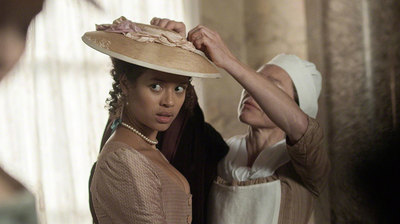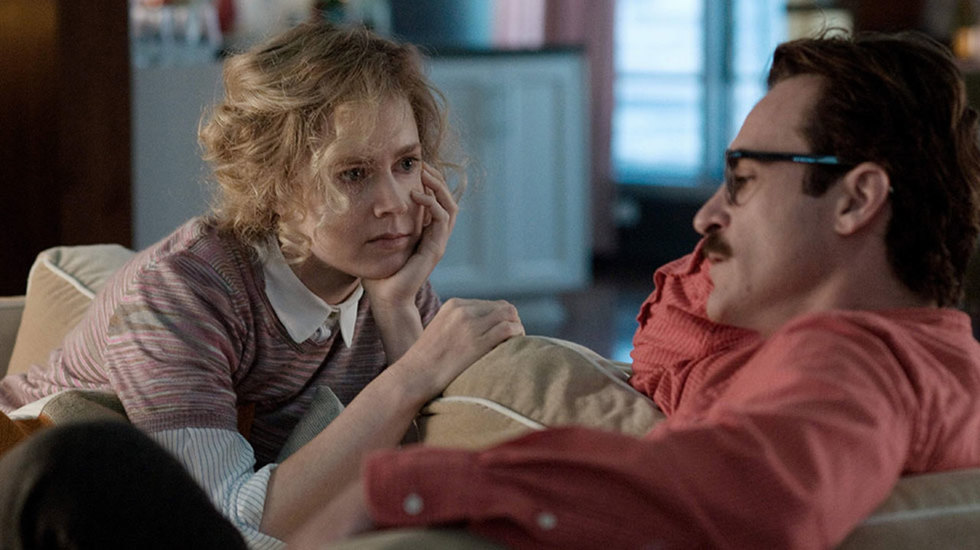
BY OLIVIA ARMSTRONG |
So Does 'Her' Pass the Bechdel Test Or What?
Is Spike Jonze's 'Her' the ultimate Bechdel test brainteaser? It's actually pretty ambiguous! Here are all sides of the debate. (Pick one!)

The Bechdel Test has been a hot topic this year since Sweden officially adopted it into its ratings system. If you need a refresher, the test is based on cartoonist Alison Bechdel’s comic strip, “The Rule.” The Rule consists of three parts:
1. The film must have two or more women who have names
2. These women must talk to each other
3. About anything but a man
To clarify, the Bechdel Test does not act as a gauge of the quality of a film, but a way to show gender bias or balance in contemporary cinema. It's also a fun game. So with the test being buzzier than ever this year, where does Spike Jonze’s Her fit in?

According to the crowdsourced BechdelTest.com, Her does not pass all three totems of The Rule. The site states that there are two or more named women in this film, but they only talk to each other about a man.
"No movie has ever required socially conscious viewers to distinguish between woman characters and female characters."
But this rating has sparked debate from those arguing the idea of "female" in Jonze’s futuristic sci-fi romantic dramedy hybrid; posing questions about whether the operating systems presented to the audience are indeed female – and perhaps if female and woman should be considered one and the same in this specific scenario.
Let's examine Her's female conversations for signs that they passed the test.
The Conversation:
Operating System Samantha (Scarlett Johansson, voice) and real human Tatiana are talking to each other about Tatiana’s attractive feet. Samantha even asks Tatiana to show her through the camera lens.
The Problem:
The conversation is about how Tatiana’s boyfriend, Paul, thinks her feet are “hot.” Commenter NessieNos on BechdelTest.com thinks the exchange "is entirely about the woman's feet, and how much they excite her male partner," therefore not following part three of The Rule.
The Conversation:
Amy (Amy Adams) and her identified female operating system are laughing about a funny scenario in a video game Amy is developing.
The Problem:
This scene could push the film to pass. However, not everyone agrees. A different commenter via BechdelTest.com argues, "I don't consider the operating systems to be female. They have women's voices, but there's no reason to believe they identify with any gender aside from what the view or the OS user projects upon them." Even if you do think the operating systems count as female characters, this particular scene is still a bit ambiguous because we only hear Amy’s side of the conversation, even though it is pretty obvious they aren’t talking about a man.
 The Conversation:
The Conversation:
Samantha talks to Jocelyn, Theordore’s goddaughter, about her pink dress, the house she lives in, and how old she just turned.
The Problem:
This could also push the film into passing the test, however the main argument lies in whether Samantha counts as a woman.
The Conversation:
Samantha is trying to console Surrogate Date Isabella after Theodore is unable to say, 'I love you.'
The Problem:
Their conversation is solely about Theodore.
Conflicts between gender and sex rise again and again when analyzing Her. BechdelTest.com commenter Chuvinistpig said, "Her adds an interesting dimension to the Bechdel Test. To my knowledge, no movie has ever required socially conscious viewers to distinguish between woman characters and female characters."
Theodore falls in love with Samantha as if both of them physically existed - we see this today with online relationships... Hello Catfish? It could even be argued that Samantha is not necessarily female, but counts as a woman because her gender identity is what is actually presented to the audience rather than her physcial, female being.
It's definitely a tricky film to analyze through the lens of Alison Bechdel, but check out Her to decide for yourself. It's pretty great (I guess I've picked a side!)

